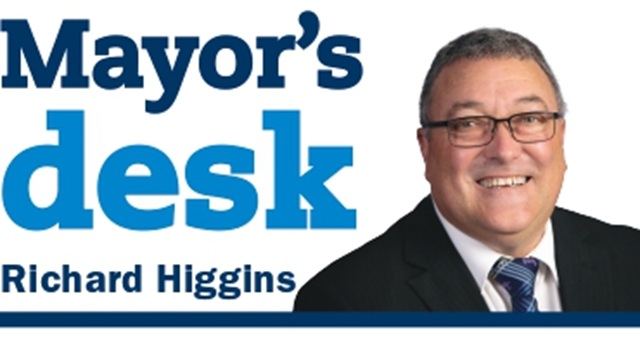A finding has been handed down in relation to the homicide of Belgrave man Maxwell ‘Max’ Lawson on 10 March 2024.
Max was 35 when he died, worked as a plasterer, lived with his partner Samantha Shaw and had a daughter with his ex-wife, Stephanie.
Ms Shaw, Max’s best friend Roxanne Hatfield, Max’s mother Jane Willis, Max’s sister Darian Jones and Max’s daughter all gave impact statements as part of an inquest.
“Max worked so hard to get his life in order so that he was able to see more of her (his daughter) and was working tirelessly to set up the spare room so that she had a room of her own when she came to stay,” Ms Shaw said.
“My best friend Max, is gone — taken from this world in a violent, senseless act he should never have been caught up in. Every single day, I feel the weight of his absence,” Ms Hatfield said.
On 11 March 2024, Max’s death was ruled by forensic pathologist Dr Victoria Francis to have been caused by a stab wound to the back inflicted by Luke Blanchfield, the partner of Max’s friend Breannan Ploeg.
Mr Blanchfield was arrested at the scene of the altercation, having made the Triple Zero call after stabbing Max. Mr Blanchfield was not criminally prosecuted, with the Office of Public Prosecutions deciding in December 2024 that there were ‘no reasonable prospects’ of charging Mr Blanchfield with murder due to difficulties proving Mr Blanchfield’s intent and a lesser charge of manslaughter was also unlikely to be successful as the prosecution would struggle to prove beyond a reasonable doubt that Mr Blanchfield hadn’t acted in self-defence.
“Max was my son force. My first born. He was complex, yes, but also vibrant, tender and unforgettable. I miss his hugs. I miss his voice. I missed the future he should have had. The loss of Max has left a hole in our lives that can never be filled,” Ms Willis said.
“Maxy continues to be loved, remembered and missed every single day. He was as easy going as it gets. He loved having a good time, alcohol, laughter, partying, x-box and camping. The simple things in life made him happy,” Ms Jones said.
“I feel angry, heartbroken, confused… and sometimes just numb. No matter how hard I try to stay strong, the pain’s still there. I’ll never stop missing him. I’ll never stop loving him. And I’ll never stop hoping that one day, there’s justice — for my dad, for everyone who loved him, and for me. Because I still need him. So much,” Max’s daughter said.
Max had also been close friends with Cameron Ploeg, who had previously been married and had children with Breannan, describing both as ‘his best friends and his family.’
Breannan and Cameron were back in contact in early 2024 to facilitate contact with their children, which put strain on the relationship between Breannan and Mr Blanchfield. Cameron was also in a relationship with another woman, Emily, at the time.
Mr Blanchfield and Max had never met, but according to his stepmother who had heard him speaking about it, Max had developed a hatred for him.
In the afternoon of 10 March 2024, Mr Blanchfield and Breannan had an argument after Mr Blanchfield accused her of trying to look good for Cameron. At 3.14pm, Max, Ms Shaw, Cameron and Emily had all set off to visit Breannan at the Belgrave address, with Emily and Cameron arguing over the state of their own relationship with Cameron on and off the phone with Breannan that morning.
At 3.43pm, Breannan left the home with the children, leaving Mr Blanchfield, later asking him via text if he had left the home which he fought back against, questioning why he would leave his ‘supposed house’ and to get her ‘partner’ to remove him because he was ‘ready to fight again’.
Breannan and her children met up with the others at 4.15pm at Burrinja Cultural Centre in Upwey where they decided they would take the kids to Cameron’s house for a swim, with Max offering to go pick up bathers from the Belgrave address that Breannan had previously had ready for the next day. According to the finding, Breannan told police at the scene that ‘Max took my car and said I’ll sort him out, though he was intoxicated.’
At 4.36pm, Max arrived at the Belgrave home and is captured on motion-detection CCTV walking towards the side of the house, with the evidence suggesting he entered through the unlocked rear door and confronted Mr Blanchfield was laying on the bed in the master bedroom and told him to leave, which he refused.
The CCTV captured Max returning to the vehicle and retrieving a telescopic vacuum cleaner pipe, which he extended to a larger length before returning to the house. During this time, Mr Blanchfield said he grabbed a large kitchen knife and placed it in the back of his shorts, fearing Max would return with a weapon, and went outside where he saw Max who lunged at him with the pipe.
Mr Blanchfield said he blocked the strike with his left arm, with Max then placing him in a headlock with his left arm and attempting to pull him to the ground. CCTV audio at 4.38pm captured ‘indistinct but raised and aggressive male voices’ before cutting out, recommencing with a ‘banging metallic noise and male voices’ about a minute later. A dent found in the pipe was likely to have been caused by Max’s initial strike.
Mr Blanchfield said he did not lock the back door after Max left to retrieve the pipe as he did not have enough time, with the door only being able to be locked with a key which he believed was in his car in the driveway.
Mr Blanchfield later told police after his arrest that fearing for his life, with Max almost a foot taller at six foot, seven inches tall compared to himself at five foot, eight inches tall, he stabbed Max but didn’t know how many times. The autopsy revealed four penetrating wounds caused to Max, likely by the knife, as well as a force injury to his left forearm that was comparable with offence/defence injuries.
Max’s autopsy also identified a slight presence of methamphetamines and cocaine in his system, as well as a blood alcohol level (BAC) of 0.14 and a vitreuos humour alcohol level (VAC) of 0.21.
In the conclusion, Coroner Sarah Gebert found that the case does not deal with systemic issues but Max’s death was clearly preventable and his death was entirely avoidable.
“The incident involved aggression and the use of force to resolve a domestic situation. However having made that observation, Max and Mr Blanchfield had not met before. On this occasion Max appears to have acted to help out close friends who he regarded as family,” the finding reads.
“Toxicological analysis of Max’s blood showed the presence of methylamphetamine, cocaine and a high level of alcohol which may have contributed to his decision to confront Mr Blanchfield and retrieve the weapon from the vehicle. It also appears the Max had not slept on the night before the incident,”
“There is no doubt that the presence of weapons, and in particular a large knife, during the incident significantly increased the risk that someone would be injured or killed and that risk tragically eventuated. However, Mr Blanchfield said he responded to a threat, which was largely unknown, and feared for his safety and his life. In addition, he said that it was not his intention to have ended Max’s life.”







